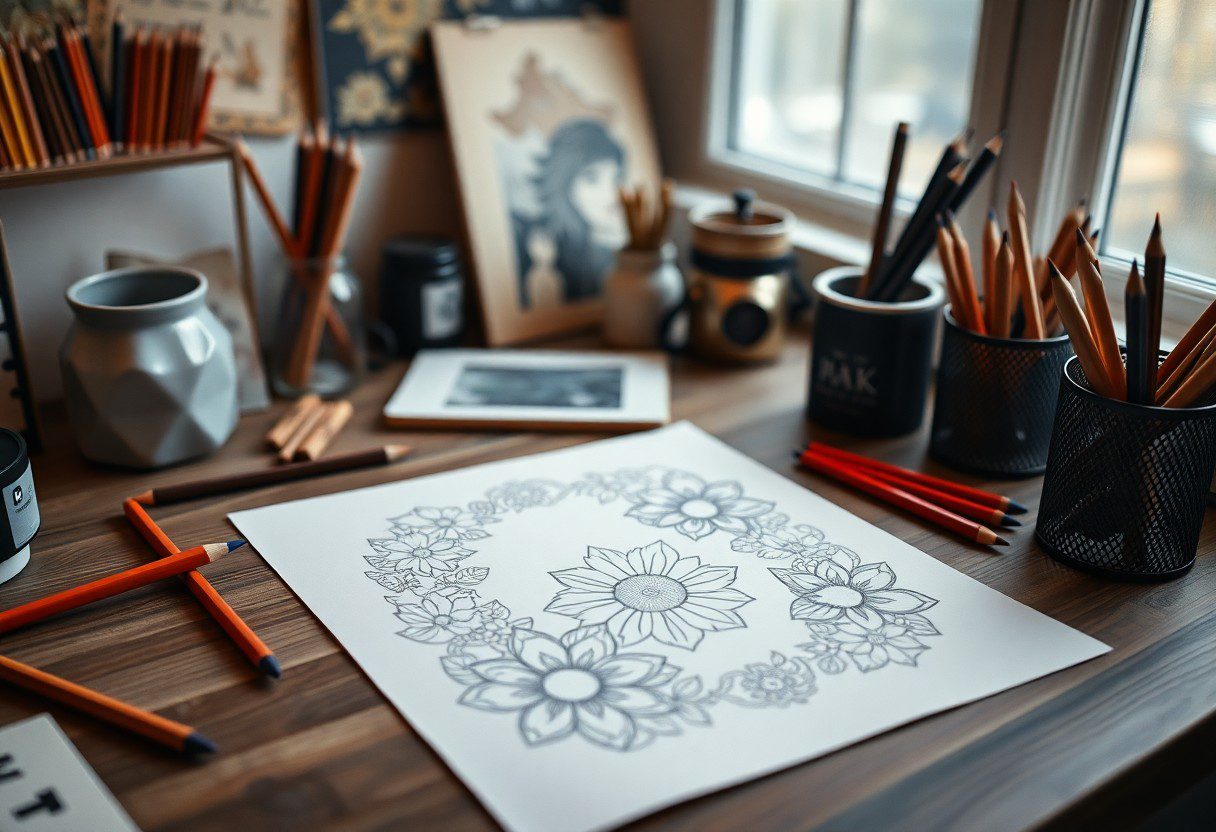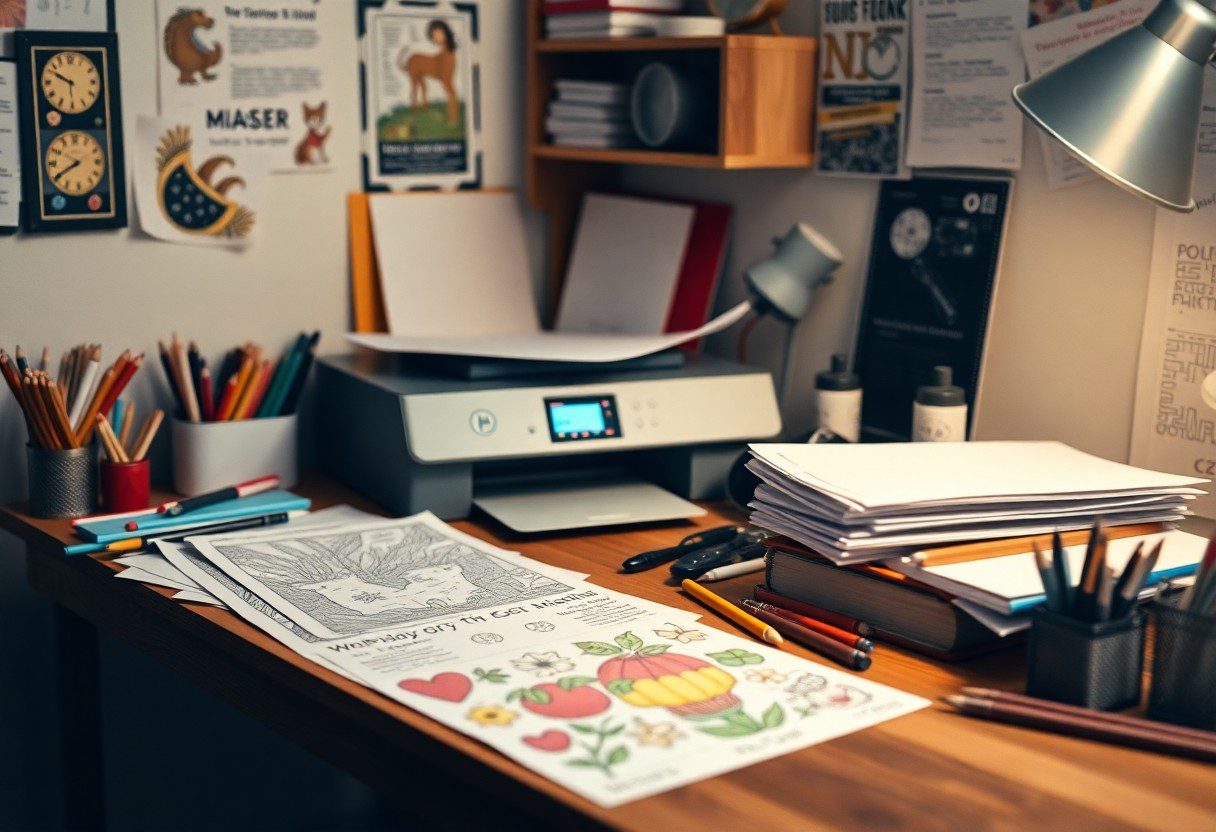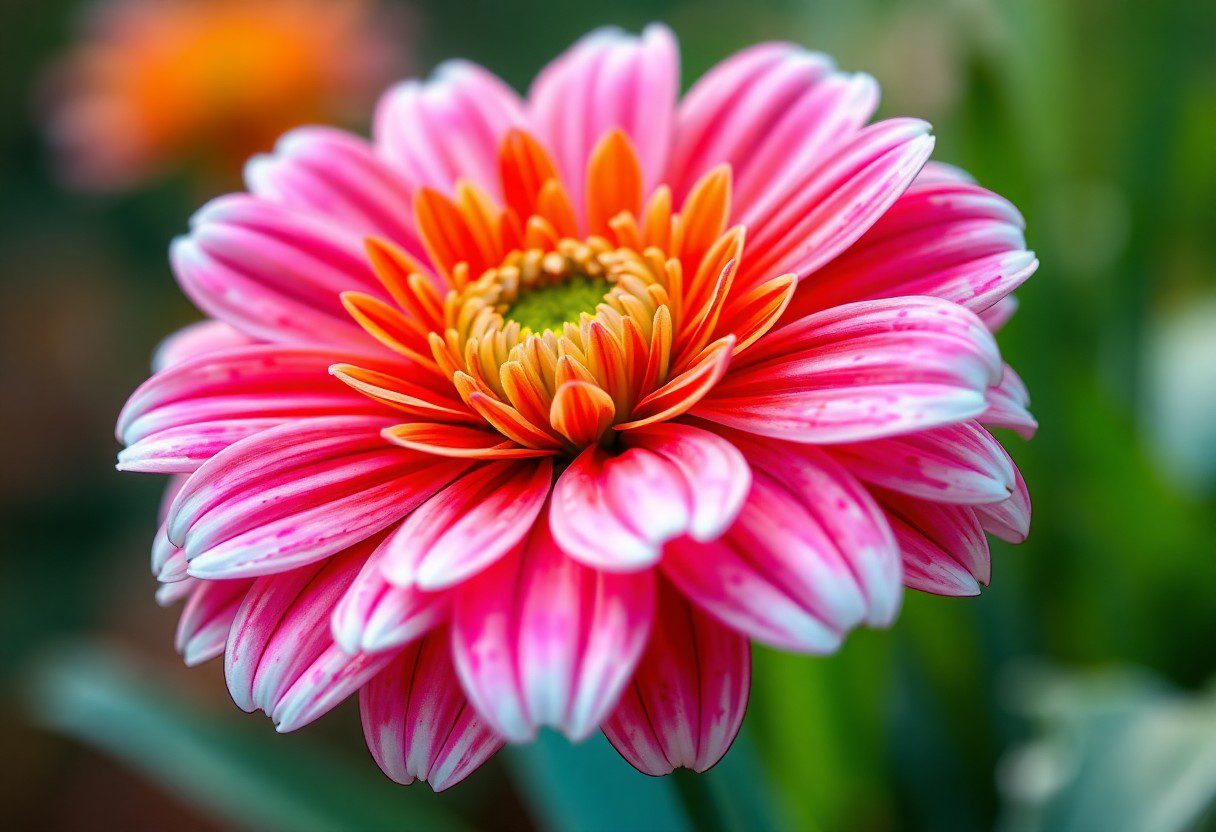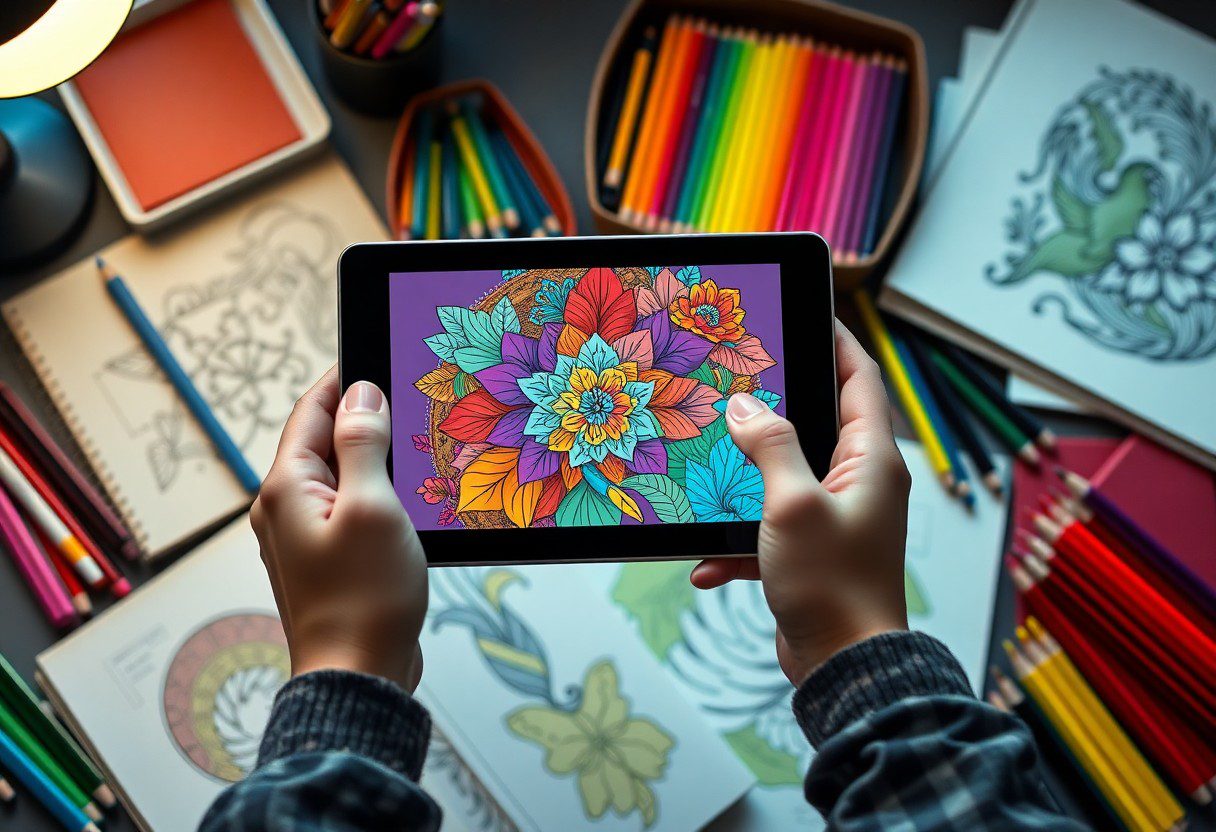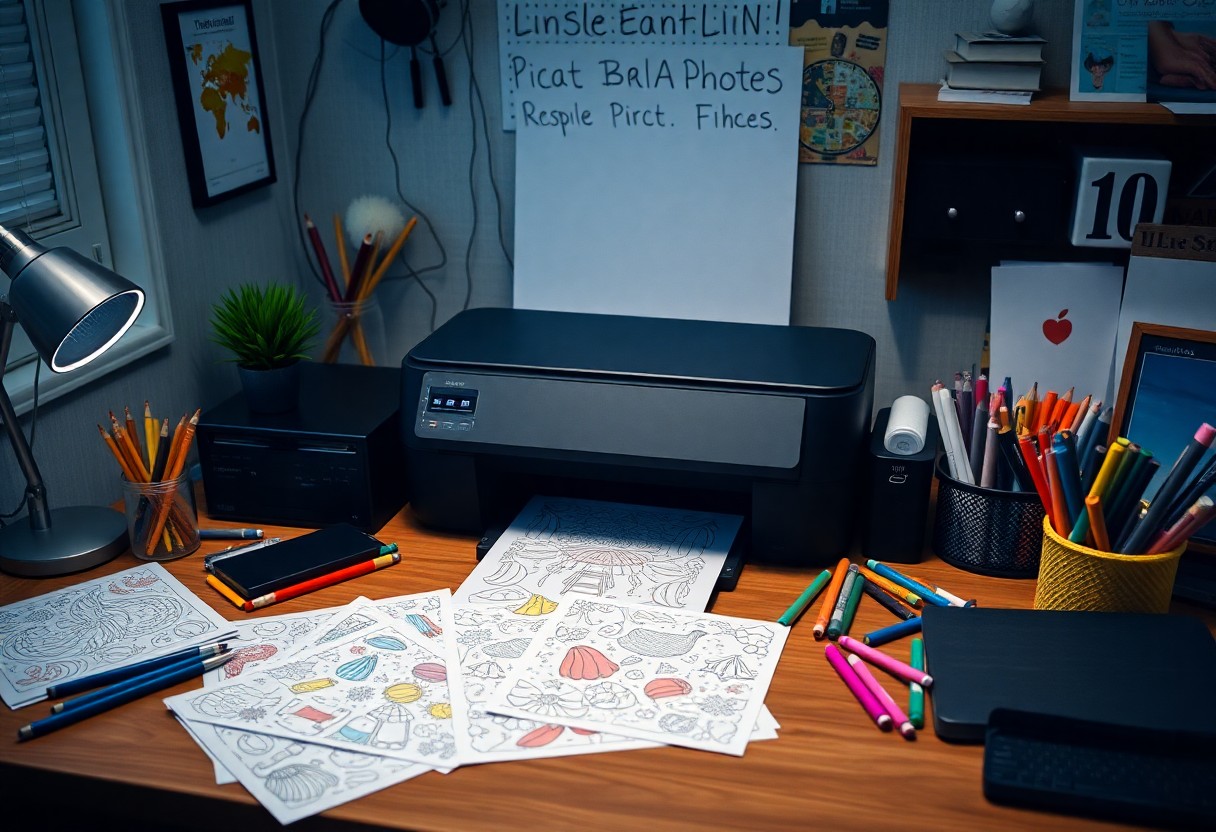Print your favorite designs effortlessly with this easy guide on how to print a coloring page. You’ll learn the best methods to select, download, and prepare your page for printing, ensuring your finished product is stunning and vibrant. Choose high-quality images to enhance your coloring experience, and adjust your printer settings for optimal results. By following these straightforward steps, you can unleash your creativity and fill your world with colors!
Essential Preparation Steps
Your journey to printing a perfect coloring page begins with well-thought-out preparation. Assess your needs and gather supplies like paper and colored pencils. Additionally, explore various online resources to find the best coloring pages that resonate with you or your intended audience. Taking these steps will lay the groundwork for an enjoyable and productive coloring experience.
Choosing the Right Coloring Page Format
Assuming you’re looking for the most suitable coloring page, consider formats like PDF or JPEG for optimal printing. PDFs often provide higher quality and scalability, ensuring your coloring page retains its details and crisp lines. JPEGs can be more accessible, but make sure the resolution is high enough for printing to achieve the best results.
Checking Printer Settings and Paper Type
One important step in preparation is checking your printer settings and selecting the appropriate paper type. Pay close attention to factors like *print quality*, *paper weight*, and *color settings* to ensure the best outcome. Adjusting these settings will impact the clarity and longevity of your print, enhancing your overall coloring experience.
Essential adjustments to your printer settings can significantly influence the outcome of your coloring page. Before hitting print, ensure your printer is set to *high-quality mode* for crisp details and *selected paper type*. Using the correct *weight and finish* will provide a durable surface for coloring. If you’re using colored markers, opt for heavier paper to prevent bleed-through. Additionally, always double-check your *color settings* to avoid printing in black and white accidentally, as this can diminish the vibrancy of your colors.
Printer Setup Considerations
Even the best coloring pages can fall flat if your printer settings are off. Before you investigate printing, ensure your printer is properly connected, has sufficient ink, and is configured to the right settings. Adjusting these details can make a notable difference in the quality of your color prints, so take a moment to check your printer’s preferences and capabilities to get the most vibrant results.
Color vs. Black and White Settings
Some printers offer an option to select either color or black and white printing. If you want to achieve vivid images, opt for the color setting; however, if you’re looking to save ink, selecting black and white can be a smart choice. Verify that you are selecting the desired option before hitting print to avoid unwanted surprises!
Paper Size and Orientation Options
Black and white prints are often cheaper but can sometimes lead to softer hues if the coloring page is designed for color output. Choose the right paper size, typically standard letter (8.5 x 11 inches) or A4, to ensure optimal scaling of the image. The orientation—landscape or portrait—should align with the design of the coloring page.
To enhance your printing experience, double-check the paper size and orientation settings in your printer preferences. Using the incorrect size can result in important sections of the artwork being cut off, while the wrong orientation may force the image to print awkwardly. Ensure your printer is set to the same dimensions as your coloring page for a perfect fit, allowing you to color as intended without any unexpected surprises!
Also Read : How To Draw a Coloring Page
Quality Enhancement Factors
Clearly, enhancing the quality of your coloring page printing is imperative for the best results. Consider the following factors:
- Resolution settings
- DPI adjustments
- Paper weight selection
- Color calibration of your printer
Thou should pay attention to each detail to achieve a professional finish.
Resolution and DPI Settings
Quality plays a pivotal role in how your coloring page appears once printed. Ensure your images have high resolution, ideally at least 300 DPI. This setting captures more detail, producing crisp lines for your artwork. Adjust your printer settings to match this DPI for optimal results.
Paper Weight Selection
Selection of proper paper weight significantly impacts your coloring page’s output. Choosing the right weight not only enhances the aesthetic of your art but also affects the feel during coloring.
Another aspect to consider is the actual weight of the paper. Heavier paper, around 200-300 GSM, is often preferred for coloring pages as it prevents bleed-through, allowing you to use various mediums without worries. Selecting too light a weight might lead to your colors bleeding into other pages, while an excessively thick paper may cause printer jams. Prioritize a balanced weight for a satisfying coloring experience.
Printing Process
Keep in mind that the printing process is imperative for achieving the best results with your coloring page. Begin by selecting your desired paper type, such as cardstock for sturdiness or standard printer paper for easy handling. Once you’ve made your selection, access your print settings—ensuring they are tailored to your specifications, including orientation, paper size, and quality. Ultimately, a well-executed printing process allows you to enjoy your coloring experience to the fullest.
Preview and Adjustments
Some printing software features a preview function that allows you to see how your coloring page will look once printed. Before hitting the print button, take a moment to examine the alignment, scale, and any potential borders. Make any necessary adjustments to ensure that the image fits well on your selected paper, providing you with ample space to color without cutting off important details.
Test Print Recommendations
Adjustments to your printer settings can significantly impact the coloring page’s final appearance. A test print on plain paper is always a wise idea before using your chosen cardstock or specialty paper. This allows you to check for any alignment or color issues. By doing so, you minimize the risk of wasting expensive paper and ensure that the output matches your expectations.
Plus, performing a test print can highlight potential issues like color discrepancies or misalignment before you commit to the final version. Ensure your printer’s settings are optimized for the type of paper you intend to use, and adjust the resolution for sharper details. This practice can save you lots of frustration—plus, it gives you a sneak preview of how vibrant and fun your coloring page will be, allowing for any last-minute changes or tweaks!
Troubleshooting Common Issues
To ensure a smooth printing experience when creating your coloring page, you may encounter some common issues. Whether it’s problems with print quality or paper feed, knowing how to address these challenges will help you enjoy a hassle-free printing session. Stay calm and follow the tips provided to troubleshoot effectively.
Dealing with Print Quality Problems
An occasional print quality issue can stem from low ink levels, clogged nozzles, or incorrect printer settings. To improve print quality, check your ink levels, clean the print head if necessary, and ensure you’re using the correct paper type in your printer settings.
Resolving Paper Feed Issues
For paper feed problems, first, check if any paper is jammed in your printer and carefully remove it. Ensure that the paper is loaded correctly in the tray, aligning it with the guides. If issues persist, inspect the condition of your printer’s rollers and consider cleaning them.
Problems with paper feeding can often arise from using the wrong paper size or type. Always ensure that you are using the appropriate paper for your printer. Additionally, keeping your printer clean and well-maintained can prevent feed issues. If jams occur frequently, check the roller condition, as worn rollers may need replacement. Finally, less than optimal paper can lead to poor feeding; therefore, utilizing high-quality paper can enhance your printing experience.
Tips for Best Results
For optimal outcomes when printing your coloring page, consider the following suggestions:
- Use high-quality paper for a better finish.
- Ensure your printer settings match the type of design.
- Select the appropriate ink type for vibrant colors.
- Check your connections to avoid print failures.
Perceiving these tips will enhance your overall coloring experience.
Ink Conservation Methods
Some effective ways to conserve ink include adjusting your printer options to use draft mode or selecting grayscale for less color-intensive prints. Additionally, consider using print preview features to eliminate unnecessary pages and ensure that you are only printing what’s needed. This not only saves your ink but also your resources.
Paper Handling Guidelines
One effective way to ensure a smooth printing process is to handle your paper with care. Always store your paper in a dry, flat environment to prevent moisture or warping. When loading, avoid touching the printing surface, as oils from your fingers can interfere with ink absorption and print quality.
Results matter in printing, especially when it comes to coloring pages; handling your paper properly can significantly affect the final appearance. Keep your paper flat and clean while avoiding exposure to moisture or direct sunlight. Additionally, using high-quality paper ensures that the ink adheres well and enhances the colors’ vibrancy and clarity, giving you an engaging and enjoyable coloring experience.
Summing up
From above, you can see that printing a coloring page is a straightforward process that enhances your creative experience. Start by selecting and downloading your desired coloring page, ensuring that you choose a high-resolution image for the best print quality. Next, adjust your printer settings to suit the paper type you are using, and then press print. Once printed, you can commence your coloring adventure with your chosen materials. By following these simple steps, you can easily enjoy hours of artistic fun.
FAQ
Q: What materials do I need to print a coloring page?
A: To print a coloring page, you will need a few basic materials: a computer or a device with internet access, a printer, and paper. It is recommended to use white printing paper or slightly thicker paper designed for coloring, as this will hold up better to coloring mediums such as crayons, markers, or colored pencils. Additionally, ensure that your printer has enough ink for a clean print.
Q: How do I find and select a coloring page to print?
A: To find a coloring page, you can search online using keywords related to the theme you’re interested in, such as “animal coloring page,” “flower coloring page,” or “cartoon coloring page.” Numerous websites offer free, downloadable coloring pages. Once you find a suitable page, click on the image or link to ensure it’s high resolution, then download it to your device. Before printing, you may want to adjust the size to fit your preferences.
Q: What settings should I use on my printer to ensure a high-quality print?
A: When setting up your printer, select the appropriate paper size that matches your chosen coloring page, usually either A4 or Letter size. For optimal quality, adjust the print settings to “best quality” or “high quality,” particularly if your printer offers color or grayscale options. Additionally, make sure to use the correct paper type setting (usually ‘Plain paper’ works well for most coloring pages). Don’t forget to preview the page before printing to ensure it looks correct!
